Deokindang
2024-04-07
28-3, Pungnammun 3-gil, Wansan-gu, Jeonju-si, Jeonbuk-do
063-282-6336, 010-5654-3554
Deokindang is located across from the west street of Jeonju Hanok Village. The guesthouse is surrounded by low walls, inside of which there are grass yard, stone pavement, and four traditional houses with three guestrooms, which are called the Large Room, Small Room, and Kitchen Room. Here, the "Kitchen Room” is not actually a kitchen, but a kitchen turned into a bedroom. The Large Room in the center of the main building can accommodate up to 8 people, making it a perfect place to stay for a large family. It’s furnished with thin, white calico sheets, which are very soft to the touch.
Situated on the outskirts of Jeonju Hanok Village and yet very close to Gyeonggijeon Shrine, Jeondong Catholic Cathedral, Nambu Market, and Jeonju Pungpae Jigwan (Jeongju Gaeksa. Treasure No. 583), the guesthouse is quiet and conveniently located as well for those taking a tour of Jeonju. The owner of Deokindang also owns another guesthouse called Su House, so the guests of Deokindang can have access to the Community Room of Su House.
The Hanok [Korea Quality] / 더 한옥 [한국관광 품질인증]
2024-04-07
68-15, Eunhaeng-ro, Wansan-gu, Jeonju-si, Jeonbuk-do
+82-10-2189-4002
The Hanok was transformed into a new style of hanok by combining the traditional structure (built in 1975) with a modern hanok style. Located in Jeonju Hanok Village, this large hanok is composed of a ‘ㄱ’-shaped bonchae (main building, 7-kan*), a sarangchae (men’s quarters, 3-kan), a large courtyard, and a platform for crocks of sauces and condiments. The house accepts only a limited number of people so that guests can enjoy a relaxing stay amid a pleasant, spacious environment.
Each room is built with “well-being” construction materials such as Hinoki cypress wood, red clay, and hanji (traditional Korean paper handmade from the mulberry tree). As for the four rooms of the anchae (women’s quarters), ‘Gwibin’, the largest room, is suitable for two families. It is heated with the ondol system (Korean floor heating system), and has a body massager and two king-sized beds. ‘Eoulim’ has an attic and a high ceiling with exposed rafters and crossbeams. Both rooms are equipped with two bathrooms.
The ‘ㅡ’-shaped sarangchae opposite the courtyard has three guestrooms. In particular, ‘Byeolhana’ has a red clay bed with ondol heating; while ‘Byeolset’ features a bunkbed made of wooden materials originally used in the construction of the house.
The Hanok provides a ‘Moonlight tea meeting’ where guests can enjoy tea and conversation under the moonlight in the large courtyard.
*kan - a unit of measurement referring to the distance between two columns.
Daeseung Hanji Village & Hanok Traditional Culture Experience Center (대승한지마을한옥전통문화체험관)
2024-10-17
18-4, Bogeun-gil, Soyang-myeon, Wanju-gun, Jeonbuk-do
+82-63-242-1001
Daeseung Hanji Village in Wanju County, Jeonbuk-do Province was part of Jeonju City from the time of the Baekje Dynasty until 1935, when Wanju County was separated from Jeonju City. The village has been famous for the production of hanji (traditional Korean paper handmade from mulberry tree) since the Goryeo Dynasty, and is the origin of the world-famous ‘Goryeo Paper.’ Most of the villagers were still employed in producing and selling hanji until a few years ago, but these days they work in various businesses including farming and stock farming. However, the hanji masters continue to preserve and promote the hanji tradition through the Hanji Exhibition Hall and Experience Center and other activities. Surrounded by low hills (Seungraebong and Duribong), the village consists of farmhouses, cattle sheds, old hanok houses, the site of the seodang (village school), and a pavilion, and has traditional games including a swing and tuho (stick throwing). The center is composed of hanok accommodation, the Hanji Experience Center, and the Hanji Craft Exhibition Hall set amid a quiet, clean environment. In particular, the Hanji Experience Center provides various interesting and reasonably-priced hands-on experience programs for people of all ages including kindergarten children, such as making hanji, hanji fans, hanji shoes, hand mirrors, hanji masks, instruments, pencil holders and so on. The hanok accommodation has eight guestrooms, each of which features a large window and is equipped with a modern-style bathroom, 40-inch TV, air-conditioner, refrigerator, dressing table, etc. The rooms are decorated with wooden and hanji materials in a simple yet elegant style. The house has also a seminar room (66m2) equipped with a beam projector for group seminars. The separate restaurant provides Korean-style meals, and guests can also use the kitchen. As the house is surrounded by a pine grove, guests can appreciate the clean air scented with pine anywhere in the house.
Gyodonggaon / 교동가온
2025-08-12
73-1, Eunhaeng-ro, Wansan-gu, Jeonju-si, Jeonbuk-do
+82-10-5106-3355
Gyodong Gaon is located right in the middle of the main street of Jeonju Hanok Village. The word "gaon" means "middle" in Korean. It's a two-story traditional Korean house that stands out among the rest of the traditional Korean houses in the alley leading to Omokdae. Just inside the gate is a yard with colorful flower trees, jars of sauces, and furnace. The mural on one of the walls is popular among the guests as a place to take photos.
The "numaru", or "loft" in Korean, overlooks the Hanok Village, and is one of the best places in the village to get a closer look at the 500 year old zelkova tree and the foot of the mountain nearby. Open to all the guests, the "numaru" is very popular during the winter as well as the summer. It's an open space with a wooden floor, so it's very cool during the summer, and it also serves as an observatory to enjoy the view of all the snow-covered trees and roofs in the Hanok Village during the winter while having a hot cup of tea.
The owner of the guesthouse has been living here for 37 years. He rebuilt his house and turned it into a hanok guesthouse in 2014 while making sure the rooms are well insulated and comfortable to stay.
He built a two-story building to make an efficient use of the space, and focused on making all the rooms look different. The house has five rooms, and only the “Meomulda Room” on the first floor is the only rooms with a living room separated from the bedroom. All you have to do is open the door to enjoy the view of the yard, Hanok Village, and Omokdae. The “Nanuda Room” on the second floor is the largest one that can accommodate more than five people, making it the most popular choice among families. The "Damda Room" and "Kkumkkuda Room" both have an attic that can be reached by a ladder. The attic is big enough to sleep two adults, and some guests actually sleep there for a unique experience. One of the walls of the attic is finished with cypress wood which has a pleasant scent. The “Geurida Room” has the best view through the two windows on the either side of the room, in addition to warm sunlight and cool wind that come through the window. Modern, not traditional, doors are installed in all the rooms for better sound proofing and insulation.
Gyodong Gaon offers a number of experience programs, such as traditional games like “gulleongsoe”, “tuho", and “Korean top”, As well as “sabang chigi”, “sampalseon”, and “ttangttameokgi”.
Many Korean adults are familiar with these games, while children and foreigners can find these games interesting. All these traditional Korean games are free to play.
Gochang-eup Sunghanok Village / 고창읍성한옥마을
2025-08-13
128, Dongni-ro, Gochang-eup, Gochang-gun, Jeonbuk-do
+82-63-563-9977
MUJU Resortel [Korea Quality] / 무주리조텔 [한국관광 품질인증]
2024-10-15
878, Gucheondong-ro, Seolcheon-myeon, Muju-gun, Jeonbuk-do
+82-10-8628-1217
Muju Resortel is located near Muju Deogyusan Resort in Seolcheon-myeon, Muju-gun, Jeollabuk-do, on a high plain where the air is fresh and the sound of the stream flowing down the valley can be heard. It’s a three-story building with 23 rooms, which are clean and comfortable. It serves a hearty breakfast, which is good news for the active guests visiting the area for hiking or winter sports. It also has a restaurant that serves good Korean food after breakfast time. All the rooms have a modern and stylish interior, and are furnished with hotel-quality sheets and blankets, which make it a popular choice among business travelers as well as tourists.
Jindo Hanok Pension (진도한옥펜션)
2025-07-23
3146-3, Jindo-daero, Uisin-myeon, Jindo-gun, Jeollanam-do
Jindo Hanok Pension in Jindo, Jeollanam-do, is a traditional hanok built of wood, red clay, and blue tiles - a place where you can relax in the midst of nature. From the yard of the pension you can see the South Sea or watch the sunset. Nearby is the famous Jindo Sea Road that rises from the sea twice a year, plus Geumgap Beach, the Ullimsanbang artistic community, and Jangjeon Art Museum.
Worlindang (월인당)
2025-07-23
37-11, Mojeong 1-gil, Yeongam-gun, Jeollanam-do
SUNCHEONMAN TRADITIONAL FOLK PENSION [Korea Quality] / 순천만민속한옥펜션 [한국관광 품질인증]
2023-04-13
33, Daedae 2-gil, Suncheon-si, Jeollanam-do
+82-61-741-6735
Suncheonman Minsok(Folk) Hanok Pension is located on a high plain overlooking Suncheonman Bay Ecological Park. It has been in business since 2012. Because it’s an old house that has been passed down through four generations and it may be uncomfortable for the guests to stay in, the house was renovated with five more guestrooms added in August 2013. The guesthouse was named by the owner's son, because the house has all the features of a traditional Korean house and commands a great view of Suncheonman Bay. The guestrooms are furnished with a modern bathroom, kitchen, TV, and air conditioner, but the floor is made of a thick layer of red clay using the traditional Korean floor heating system, which traps the warmth in the clay for a long time after being heated. The structure is built with Korean pine wood, which is good for your health and smells good too.
Located in the highest part of the village, the place commands a panoramic view of all the rice paddies and reed fields. In early winter, you can also see the migratory birds that are listed as a natural monument and black cranes feeding on the rice paddies. The Suncheonman Bay Ecological Park is only a 10-minute walk from the pension, so you can take a short walk to the park and enjoy the sunset on the Yongsan Observatory there. The natural landscape around the pension is a sight to behold in itself during the daytime, and the night view of the new town is also beautiful during the nighttime. There is a wooden deck in front of the pension where you can enjoy barbecue while taking in the night view. One of the best things about staying at this pension is that you can pick vegetables from the kitchen garden cultivated by the owner and his wife.
One of the reasons why this pension became popular is the food prepared by the owner's wife. Her food was introduced in the popular Korean TV show “Korean Cuisine and Dining” on the KBS channel, which introduced the family food of Jeollanam-do. All the dishes are made of all natural ingredients without any artificial flavors. The food is so good that some guests actually come here just for the food, without staying overnight. They say the dishes are nothing fancy, as all you will get is soup, grilled fish, and seasoned cockles, but they are some of the best you can find in the country. Her rolled omelete made of fertile eggs from the chickens grown by the owner is particularly popular among the regulars. The price for the food is very affordable as well.
Seoladawon [Korea Quality] / 설아다원 [한국관광 품질인증]
2023-04-13
153-21, Samseong-gil, Bugil-myeon, Haenam-gun, Jeollanam-do
+82-61-533-3083, +82-10-7616-6129
Located at the foot of Mt. Duryunsan in Haenam, Jeollanam-do Province, Seola Dawon is committed to preserving and inheriting the tea culture and nature of the region. The owner began to cultivate this place after hearing the concerns about the absence of a person who would inherit the tea culture of this region from a Buddhist monk he met at Iljiam Hermitage of Daeheungsa Temple in Haenam in 1996. Meanwhile, nine young men who studied tea together cultivated the green tea field in Haenam and built houses. After that, people who had affection for teas began to visit Seola Dawon. Since there were no decent accommodations for people who came from afar, they built eight Korean traditional-style houses in all including a Sarangbang made with stones, the earthen house, the wall-frame house, and the earthen bag house. The Korean traditional-style house was built in 2003 as a cultural space and later remodeled into rooms for the operation of Hanok Stay.
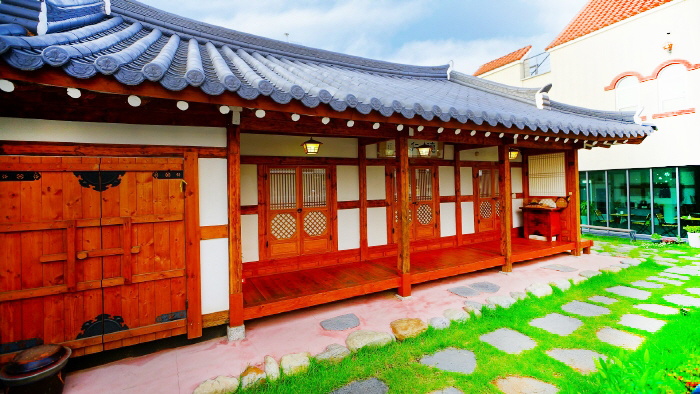
![The Hanok [Korea Quality] / 더 한옥 [한국관광 품질인증]](http://tong.visitkorea.or.kr/cms/resource/68/2556468_image2_1.jpg)
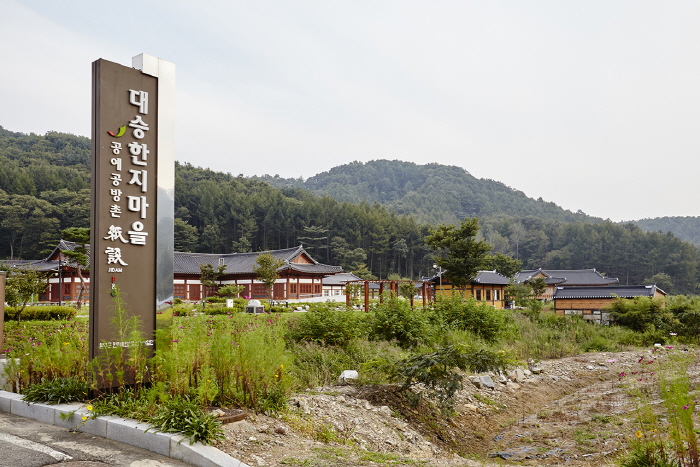
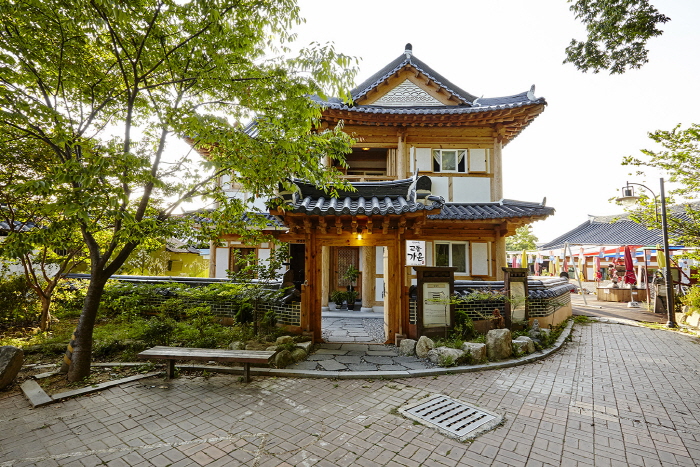
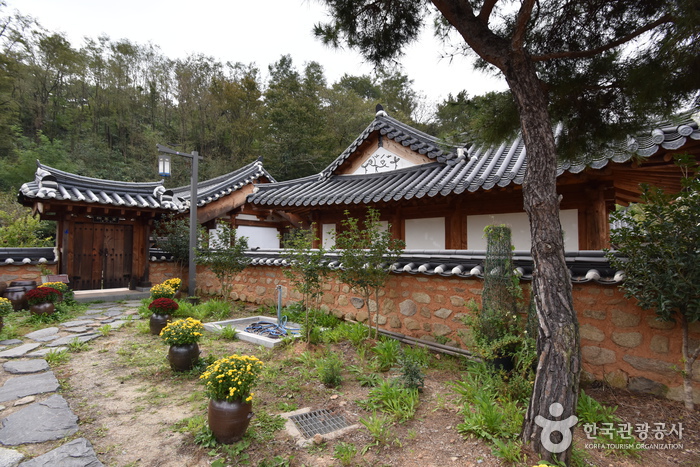
![MUJU Resortel [Korea Quality] / 무주리조텔 [한국관광 품질인증]](http://tong.visitkorea.or.kr/cms/resource/39/2576839_image2_1.jpg)
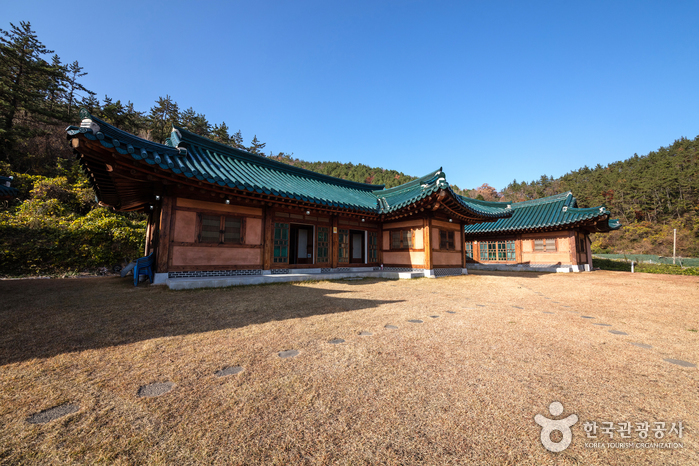
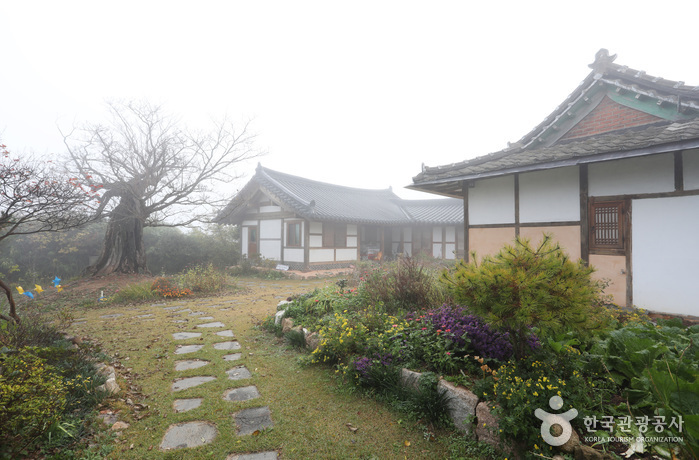
![SUNCHEONMAN TRADITIONAL FOLK PENSION [Korea Quality] / 순천만민속한옥펜션 [한국관광 품질인증]](http://tong.visitkorea.or.kr/cms/resource/28/2632328_image2_1.jpg)
![Seoladawon [Korea Quality] / 설아다원 [한국관광 품질인증]](http://tong.visitkorea.or.kr/cms/resource/63/2584863_image2_1.jpg)
 Español
Español
 한국어
한국어 English
English 日本語
日本語 中文(简体)
中文(简体) Deutsch
Deutsch Français
Français Русский
Русский